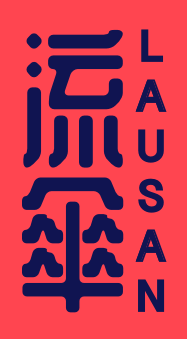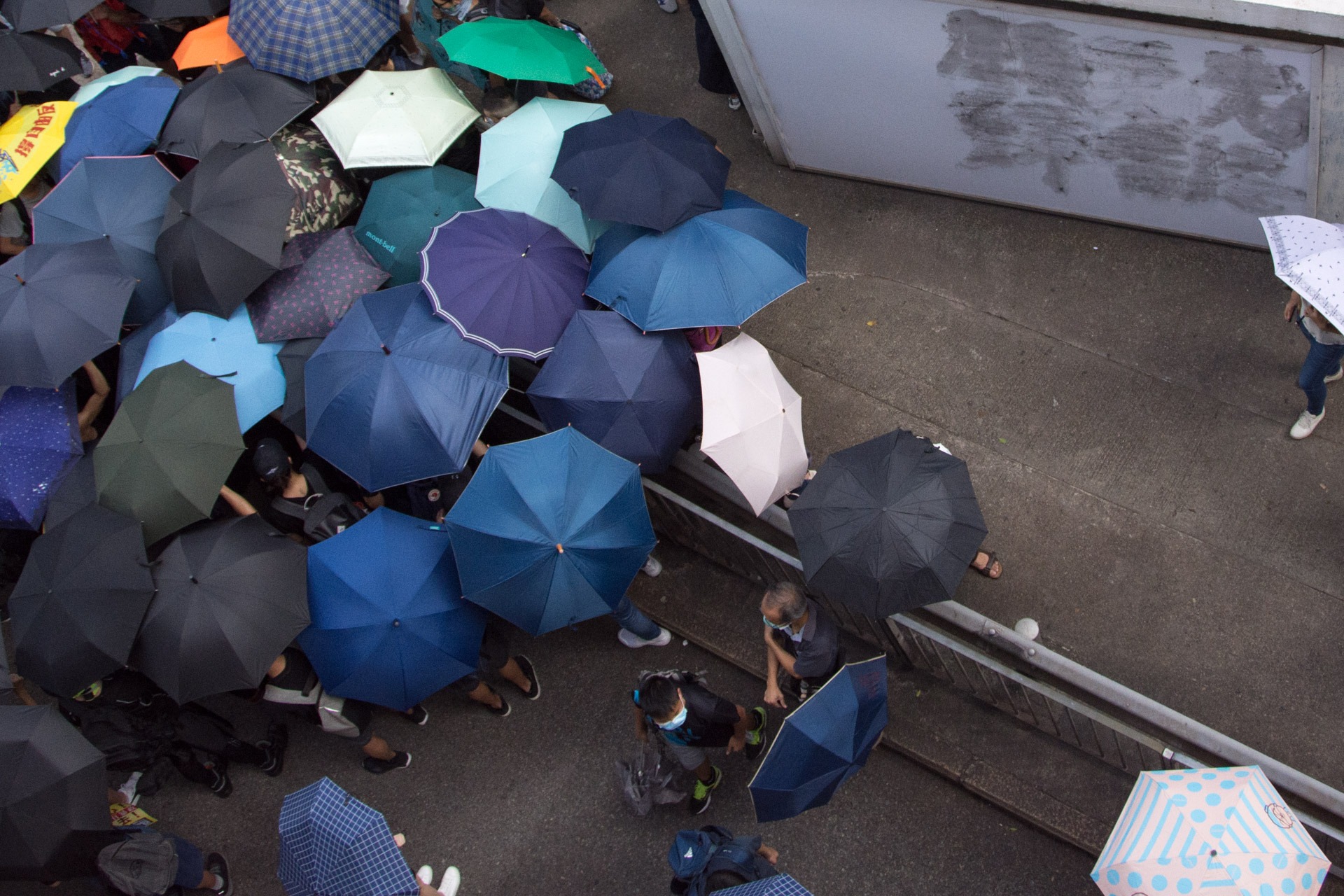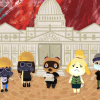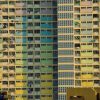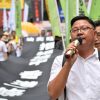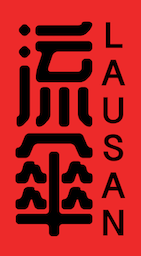Original: 【共同體的內部拉扯——香港民族的階級矛盾與社會問題】, published in 中大學生報 Chinese University Student Press
Translator: Julie, pingu, P, yehua
This article has been edited for precision and clarity. If you would like to be involved in our translation work, please get in touch here.
Eleven months into the ongoing anti-government protests, the people of Hong Kong have become well aware of the perils of a regime tainted red. In a society without democratic institutions, no freedoms can be taken for granted, and people’s diverse values and experiences will be destroyed completely.
The Covid-19 outbreak has exposed how Hong Kong’s government—a meek puppet attempting to make sense of the intentions of its master—has been totally incompetent in its response to the current pandemic. Not only did it ignore the price gouging of personal protective equipment, it also failed to stop people hailing from areas worst affected by Covid-19 to freely enter Hong Kong, thereby increasing the risk of a local outbreak and threatening the lives of people in Hong Kong. In frustration, calls for independence and autonomy have become incessant, while the emblematic slogan of the 2014 Umbrella Movement—“I want genuine universal suffrage”—is ringing loud again. Hong Kong people have completely lost faith in the puppet government; many are starting to realise only a government by the people, for the people, will be able to protect itself and its interests.
Within the city’s mainstream political discourse, Hong Kong can become independent and autonomous by seeking either nationalist or democratic self-determination. Since the handover of Hong Kong’s sovereignty from Britain to the CCP, the invisible red hand of the city’s puppet government has made its presence felt in civil society, interfering with our daily lives and values. In spite of growing feelings of fear and powerlessness in the face of an authoritarian regime, Hong Kong civil society has stubbornly resisted violent encroachments to its freedom.
Since the publication of “Hong Kong Nationalism” in 2013 in Undergrad—the official publication of the Hong Kong University Students’ Union—the discussion of the idea of a “Hong Kong nation” has sprouted. In its infancy, Hong Kong nationalism was seen as a way to resist Zhonghua ethnonationalism (中華民族主義) in its current form and its chief proponent—the CCP. In 2016, talk of the “Hong Kong nation” was in full swing, and two schools of thought emerged as a result.
The first was “civic nationalism”—advocated by Undergrad—which suggests that a national community should embrace diversity: It is not necessary for everyone to subscribe to the same culture or values, and all civilians living on the same territory should be seen as part of the “Hong Kong nation.” The second “ethnic nationalism”—championed by the now-outlawed Hong Kong Nationalist Party—takes loyalty to aspects of “Hong Kong culture” such as speaking Cantonese, to be the central criteria for determining whether one should be included in the “Hong Kong nation.”
In spite of growing feelings of fear and powerlessness in the face of an authoritarian regime, Hong Kong civil society has stubbornly resisted violent encroachments to its freedom.
These two nationalisms share an approach in how they analyze the social issues of Hong Kong: They both see the city’s CCP-backed regime as the culprit. Both camps hope to arouse Hong Kong people’s national consciousness, wrest the city’s sovereignty from Beijing, and solve social issues—such as redistribution and housing justice—as an imagined Hong Kong community.
But we must bear in mind that the “Hong Kong nation”, or the imagined Hong Kong community, is a social construction rather than a natural fact.
“Hong Kong nationalism” emerged as a tool of political discourse. On the one hand, it enables Hong Kong people to distinguish themselves from Mainland Chinese people on the basis of a unique identity, thus resisting the pressure of Zhonghua nationalism. On the other, it seeks to create a common denominator of Hong Kong identity in order to mobilize more people in the struggle for democracy.
Benedict Anderson defined a nation as an imagined community, “because the members of even the smallest nation will never know most of their fellow-members, meet them, or even hear of them, yet in the minds of each lives the image of their communion.” He traced the birth of the nation to the use of the printing press that proliferated under capitalism, as it transcends the boundaries of time and space, and enables us to understand the viewpoints and life experiences of other people living on the same soil. Similarities in experiences slowly solidified into a sense of belonging and identification.
The current social movement, which saw as many as 2 million participants in a single protest, is illustrative of this process. During the course of engaging in collective resistance, we shape and reshape our collective experiences. We may not know who is marching in front of or behind us, but one thing is clear: we are all “Hongkongers” sharing the same beliefs; “we” are willing to make sacrifices for one another without any regrets or resentment. When people chant “Hongkongers, add oil,” so loudly that it reverberates across the island, it is more than a slogan—it also expresses a yearning for a unique identity, one shared between people with the same experiences. In this sense, the idea of a “Hongkonger” fulfills Anderson’s definition of nation. The imagined Hong Kong community thus takes its shape.
We must bear in mind that the ‘Hong Kong nation’, or the imagined Hong Kong community, is a social construction rather than a natural fact.
Identity politics built upon the idea of Hong Kong as a national community is irrational and affective; without a doubt, this makes it a powerful tool of mobilization.
Recall that before the construction of this imagined community, Hong Kong people were fairly quiet in the realm of political struggle—even after the 1989 democracy movement in mainland China and the ensuing June Fourth Massacre, levels of political mobilization were not particularly high. Yet today, identity politics has sparked a large-scale resistance movement still growing in intensity. People in Hong Kong are searching for an identity; in turn, this identity is being molded through political mobilization.
But nationalism is a double-edged sword. The civic and ethnic nationalisms we see today are dependent on emotional mobilization and, at its extreme, can become a populist force, ringing alarm bells across the world. The imagined community of Hong Kong people must not stop short at passionate battlecries; preparing for an independent, autonomous future requires us to pay attention to the challenges that will arise from within our community and meet them head-on. We should expect the road to autonomy to be long and full of thorns, and as we deepen and broaden our struggle, we must not forget to fill in the gaps in our understanding of the imagined Hong Kong community—movement-building and theorizing come hand in hand.
The question is, what are the challenges that the imagined Hong Kong community must meet at this moment? I do not have all the answers, but I am offering my observations here, hoping it would stimulate others to participate in this project of imagination.
Class antagonisms in the political community
Hong Kong’s imagined community emerged gradually out of this movement. By observing the movement’s characteristics, we can identify the flaws in the current dominant conceptualizations of Hong Kong identity politics. One such characteristic is the use of ‘yellow’ and ‘blue’ to label political allies and enemies, a paradigm that finds a friend in anyone who expresses support for the movement. Interestingly, the movement is rather accepting of the bourgeois upper class and may even see them as part of the imagined Hong Kong community.
The way many Hong Kong people went out of their way to embrace Li Ka-shing when the billionaire published a cryptic ad[A]—which some interpreted as sympathetic to the movement or even as a remonstration with CCP—on various newspaper front pages is an apt example. Let’s not forget, however, that he had earlier published a joint statement against violent protests with other property magnates in the city.
The recent discourse on the “Hong Kong nation” has generally cast the bourgeois upper class as a part of the imagined Hong Kong community. Since civic nationalism theorizes this community to comprise all the citizens living on the same territory, it is no wonder the bourgeois upper class is included; ethnic nationalism does the same. It is easy to see why, simply by asking ourselves: From where do we derive our culture? Or perhaps, what have we always imagined it to be? Is it the culture of the mild-mannered, bilingual, and suit-clad city-slicker that one finds in Central, who is constantly in pursuit of market efficiency and profit? Or is it that of the plainly-clothed, slang-speaking bargain hunter in the local market—that which is drawn from the daily lives of ordinary people? Hong Kong culture is diverse and varied, even across different districts; both of these must be considered to be parts of Hong Kong culture, even if they are derived from the experiences of different classes. Thus, even a nationalism grounded in cultural uniqueness will see the bourgeois upper classes as a part of the nation.
Identity politics built upon the idea of Hong Kong as a national community is irrational and affective; without a doubt, this makes it a powerful tool of mobilization.
Whether we analyze the realities on the ground or from a theoretical standpoint, we find that the imagined community of Hong Kong people coalesces on the basis of political stance (‘yellow’ vs ‘blue’) more than anything else, such as class. This is because the current formation of the community is premised on resistance against its strongest enemy—the CCP regime—being its highest priority. Yet if we aspire to build a better society in an independent or autonomous Hong Kong, then the current manner in which the imagined Hong Kong community is defined and organized remains limited. From a class perspective, there are antagonisms within the community that we have yet to confront and address.
The “Hong Kong nation” is supposed to be a political community pursuing common goals and sharing common interests. In reality, the interests of the bourgeois upper class hinge on the stability of the existing socioeconomic structure and distribution of resources. What the upper class wants and needs is not congruent with the interests of the community as a whole.
Under the current system, politics and capital are symbiotic: In order for the state to attract investors, policies privilege capital. This is obvious from how the preferences of real estate developers have loomed large in the government’s policies concerning land. Moreover, the CCP regime often makes Hong Kong businessmen the city’s representatives in the National People’s Congress or the People’s Political Consultative Conference, thus giving them access to vast political resources. Within Hong Kong’s borders, the interests of business are stewarded by functional constituencies. Indubitably, Hong Kong’s bourgeois upper class has formed a collusive relationship with the red regime. Smashing the current political structure—a primary goal of the fledgling Hong Kong political community—would necessarily erode the interests of this very class, thus preventing it from allying with the part of the community that seeks revolutionary change.
People in Hong Kong are searching for an identity; in turn, this identity is being molded through political mobilization.
Discourse around the “Hong Kong nation” supposes that members of the imagined Hong Kong community will be willing to take responsibility for each other’s destiny, and therefore happy to implement redistributive justice and reduce social inequities internally. But how can we guarantee the bourgeois upper class will shoulder their share of this responsibility?
In an era of globalization and hazy national boundaries, Hong Kong’s bourgeois upper class does not belong to a nation in any meaningful sense. They can migrate without hindrance: Neither them nor their capital would be trapped in one place as they are free to further their interests and profits everywhere. When faced with political repression, they can escape fairly unscathed, such as by divesting their capital. It is a stretch to expect members of this class to share a destiny or stand in solidarity with the rest of the imagined community.
Until now, the bourgeois upper class has by and large been absent from the social movement: Of the few that have participated I can only think of Ricky Wong (chairman of HKTV and founder of HK Broadband Network). The vast majority of the people involved in the struggle have been the middle and working classes[1] —if anything, they are the ones who primarily make up the Hong Kong political community. As mentioned above, the bourgeoisie in Hong Kong and the red regime are colluding with each other, united in the suppression of the people of Hong Kong. Even if they are not working directly with the state, the bourgeois upper class is locked in conflict with the rest of the imagined Hong Kong community in their everyday exploitation of ordinary folk.
What the upper class wants and needs is not congruent with the interests of the community as a whole.
If Li Ka-shing is a “deep yellow ribbon”[B] who also helped Hong Kong people deal with COVID-19 by distributing personal protective equipment, he has also exploited them by having his casualized dockworkers toil for poverty pay under unsafe conditions (which led to the dockworkers’ strike in 2013), or more recently when he required his hotel workers to take no-pay leave. A “deep yellow” Li is the perfect representation of the internal class antagonisms within the Hong Kong political community.
Facing suppression from the CCP regime, the imagined Hong Kong community has organized its resistance on the basis of politics and shared identity. But even if the bourgeois upper class is willing to fight alongside ordinary folk, this solidarity is fragile and fleeting. As argued above, it is evident from the point of view of class that the current organization of the political community cannot be a viable foundation for long-term/permanent struggle, such as the struggle to create an alternative economy. The Hong Kong political community must seriously consider its internal class antagonisms and imagine how these problems can be resolved as a means of persuading those who have put themselves on the line in this struggle for the sake of the community—the labouring masses and the middle class.
The root of Hong Kong’s social contradictions
Proponents of Hong Kong nationalism have expressed concern over different social issues, even in their localist discourses. For example, they aspire to implement wealth redistribution to narrow the rich-poor disparity in Hong Kong. And in their analysis of Hong Kong’s various problems like the decline in democratic freedoms and worsening inequalities, nationalists have traced the root of the problem to the CCP regime. To be sure, problems like sky-high housing prices can be partly blamed on the flow of Chinese capital into Hong Kong, which has, among other things, fuelled speculation that has overheated the city’s property market.
However, attributing all problems to China or the CCP is not completely correct; the imagined Hong Kong community must set its sights further and wider. China has undoubtedly been a source of Hong Kong’s socioeconomic problems, but it would not be able to wreak havoc on the city if not for its collusion with Hong Kong’s financial interests.
The principle of “positive non-intervention” in the markets has been adopted by the Hong Kong government since the days of British colonialism. At the same time, capitalists across the globe have broken free of national borders, taking advantage of the market and its complex mechanisms to repress and exploit the marginalized and the lower classes. The government is able to use global financialization as an excuse to ignore the public’s plight, including aggressive inflation and a growing wealth gap. But the recent surge in mask prices due to the coronavirus pandemic, for example, could have been easily avoided if it were not for the government’s stubborn insistence on not interfering with free markets.
Even if they are not working directly with the state, in their everyday exploitation of ordinary folk, the bourgeois upper class are locked in conflict with the rest of the imagined Hong Kong community.
Beijing is but one of the most visible causes of Hong Kong’s social ills. The “invisible hand” of the free market lies at the root. It is understandable that the imagined Hong Kong community sees defeating the Chinese empire as the only means by which liberation can be attained, as it cannot exercise sovereignty over its own conditions, and its civil society is not strong enough to resist the weight of the regime’s repression.
However, if the aspiration is to build a better society, one that belongs to all of us in an independent or autonomous Hong Kong, then the Hong Kong political community must remake the existing socio-economic structure into structures and systems that correspond to the shared interests of the collective. Otherwise, the city’s social injustices will remain unresolved.
As Frantz Fanon pointed out in Black Skin, White Masks, even after the colony has gained independence and the last colonizer has left, if the postcolonial “nation-state” inherits and sustains the power structures of the colonial era, the people will remain suppressed by the ruling class. Indeed, certain revolutions in the Third World have fallen victim to this phenomenon. Even in ostensibly advanced democratic nations like South Korea, a country frequently compared to Hong Kong, a powerful class of chaebols (large industrial conglomerates that are usually family-run, e.g. Samsung, LG Group, Hyundai) dominates life. The imagined Hong Kong community must not tread the same path.
The welfare of the political community is a worthy cause, and while Hong Kong is indeed embroiled in a clash of nationalisms—the CCP’s oppression of Hong Kong people in the name of Zhonghua nationalism—it is critical that one recognizes that the roots of these social conflicts lie beyond national identities alone. Only by broadening the struggle’s horizons can we avoid being blindsided, ignoring the root causes of the problems we collectively face.
What the imagined Hong Kong community should be
In 1960s Japan, when the social and student movements of the New Left were pushing for social reform, not only was class a focus, so too were the issues of war and the plight of the vulnerable. But amid the passionate struggle, the student movement succumbed to infighting and corruption. “The true enemy of this bunch was not state power but the lack of imagination”—so wrote Japanese novelist Haruki Murakami in Norwegian Wood, as he criticized the movement for being driven by hot-headed passion, which had led the movement’s quick deflation.
Today, the imagined Hong Kong community is fighting for social change in steadfast resistance to a murderous regime. But in this all-out struggle against the vast powers of the CCP-ruled Chinese state, “we” must hold onto our powers of imagination. Hong Kong’s social problems and contradictions are not completely due to the Chinese regime. In Hong Kong, state and capital are not separate. Beyond targeting the state, we must not forget that capital and the markets are also sources of Hong Kong’s social woes. In the future, the imagined Hong Kong community must examine its internal structure from multiple perspectives, point out possible points of conflict and reflect more thoroughly upon socio-economic issues. Only then can social reforms that better align with the community’s interests be developed.
Today, under the boot of an authoritarian power, a vulnerable but conscientious imagined Hong Kong community has been quietly birthed out of a longing for freedom—one that is unafraid to raise its head to face the giant. But in our pursuit of our values and our yearning for growth, “we” cannot stop short at this step. Let our voices ring out in pursuit of truth and justice, and herald the arrival of the “revolution of our times” with concrete action.
Footnotes
[1] The Storm Media: Who exactly are the Hong Kong protestors? An academic analysis: Higher education, youth, and the lower middle class.
Editors’ footnotes:
[A] 「黃台之瓜 何堪再摘」is a line from a poem by Li Xian, roughly translated as: “A depleted melon patch does not bear continued picking.” Li Xian was one of Empress Wu Zetian’s sons. After his brother Li Hong died, Li Xian became the crown prince, but soon fell out of favour with the Empress dowager. She eventually forced her associate to force Li Xian to commit suicide. When the full-page advertisement, addressed from Li Ka-shing, was published, there was widespread speculation and interpretation, namely that Li Ka-shing was issuing a warning to Chief Executive Carrie Lam (who had previously described herself as a mother to the Hong Kong people) to stop threatening her own citizens.
[B] In Hong Kong’s social movement lexicon, the colour yellow is associated with the pro-democracy camp; “deep yellow ribbons” can be thought of as staunch supporters of the movement.
